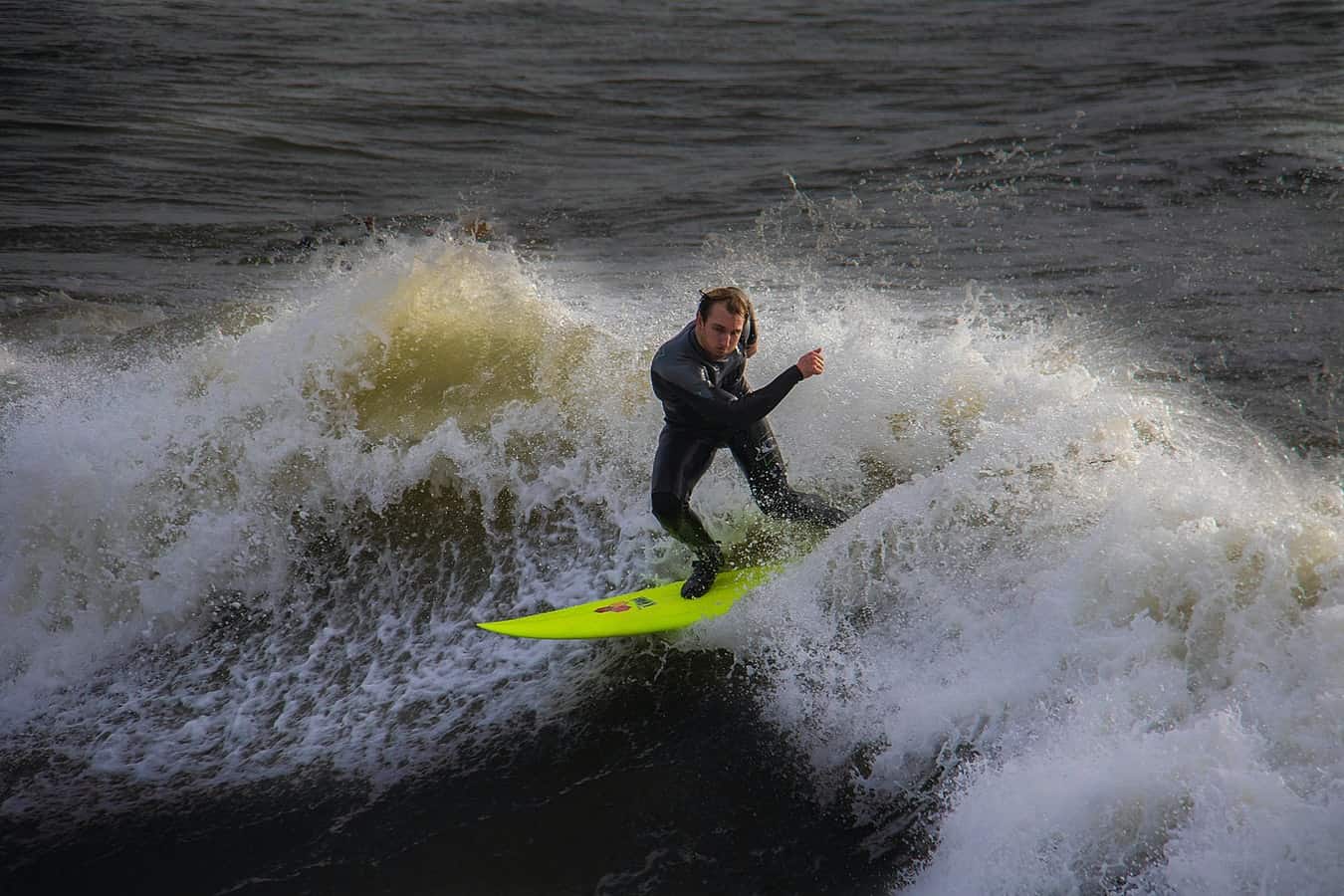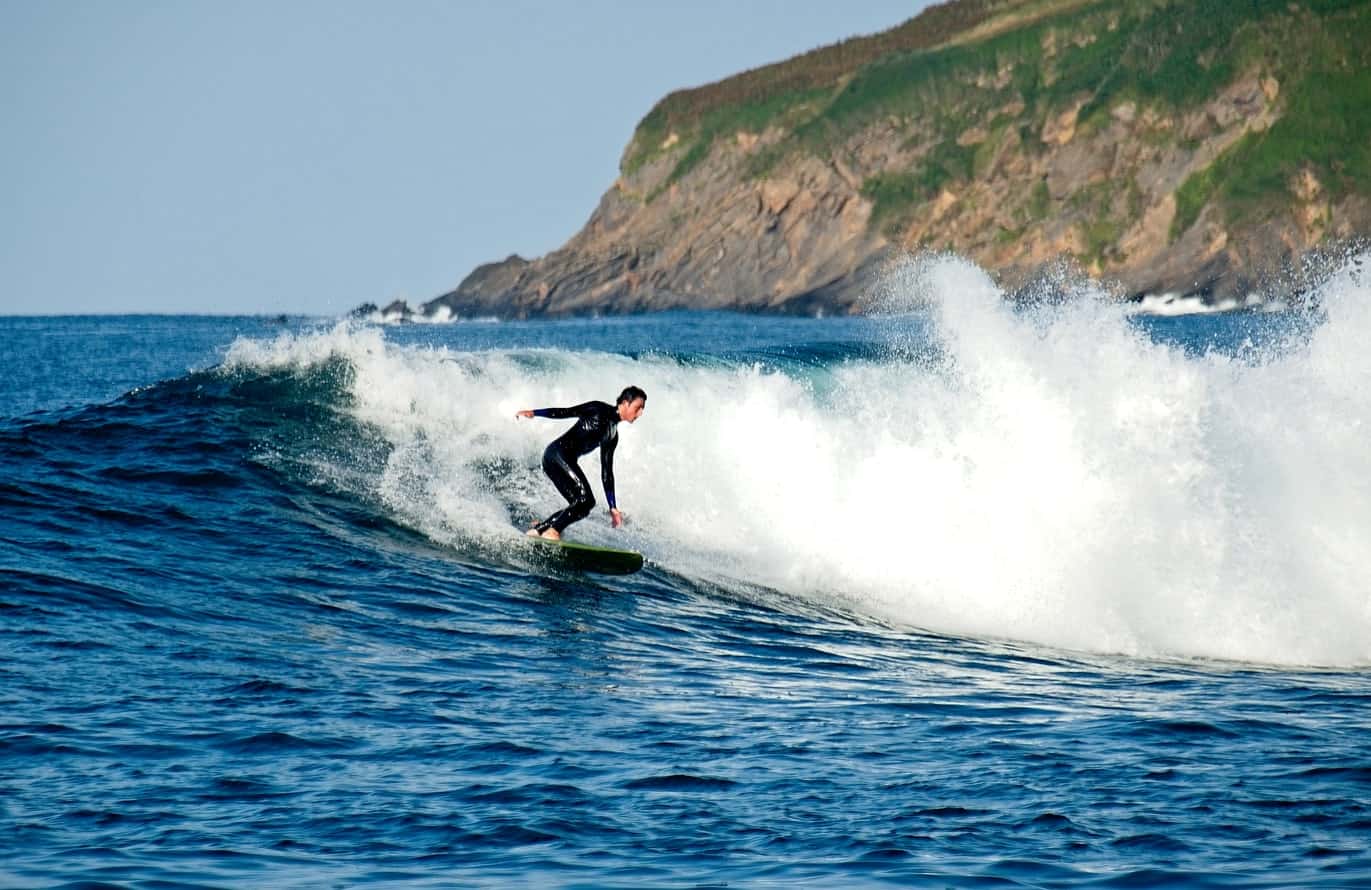When surfing, it’s common to keep a leash around your ankle to make sure your board doesn’t get away from you when you wipe out.
So can you surf without a leash? Yes, you can surf without a leash, but whether or not you should depends on your skill level, the kinds of waves you’re surfing and the local etiquette. Surfing without a leash can be a great way to test your skills and get a true feel for the board. But before you take on this challenge you must hold yourself accountable in more ways than one.
Why Do People Surf Without A Leash?
In recent years, the popularization of longboards and mid-length boards has brought about a new class of surfers: those who may be tempted to free up their footwork and honor tradition by surfing without the cord. Going leashless can improve one’s connection to the board and demonstrate a mastery of the craft. But going leashless comes at a cost, as your board may end up flying right into the shore or worse, a fellow surfer.
Generally, the risk factor of not wearing a leash can be concerning. Sometimes you see people that shouldn’t be out without a leash, or people that have all the skill in the world that still endanger people. Either way, when you go leashless you have to accept the risk that comes with it.
See when you surf leashless, the whole session becomes a game in itself of being connected. You have to decide if you want a session solely focused on staying with your board, or if you just want to be free to ride waves. Some surfers always use a leash with shortboards unless the waves are minuscule and not crowded because many believe the only legitimate reason to not wear a leash is if you’re planning on doing footwork the leash inhibits.
How Does Skill Level Factor Into Surfing Without A Leash?
For many wave riders, surfing on a leashless board is a question of style, authenticity, and attitude. Paddling out on a cordless surfboard can also be a different way of experiencing the glide. However, the term “kook’s cord” was invented with a purpose. More than just a matter of style or safety, it was a way of avoiding swimming all the way back to shore to retrieve the board.
You should avoid going out leashless if you’re a beginner surfer or even if you’re still adapting to a new board. You will put the safety of others at risk. There could be surfers, swimmers, children and old people in the water who don’t realize a lost surfboard is uncontrollably heading toward them. Every surfer loses their board more often than they think.
Whether you fail the take-off, slip on a bottom-turn, get hit by a falling lip, get hammered by a closeout, ditch the board, fail to kick out safely or wipe out, every surfer tends to lose control of the board. And that’s perfectly fine! It’s part of learning and improving your skills and the leash can help keep you and your board together. Unlike some longboarders think, the leash was not invented for the lesser skilled surfer. It is a smart piece of gear that protects the first-timer, the weekend warrior, and the pro surfer alike.
Why Do Some View Leashes As Mandatory?
Longboarders in particular tend to gravitate to “ropeless riding” because of the pure feel of the board and the drag that can happen when you wipeout and get dragged by a heavy board. Some common quotes about riding with leashes include “Longboarders should never use leashes.” “I don’t need one, I never lose my board.”
“You don’t need one if you can really surf.” “I’m not going to lose my board.”
“Swimming and collecting your board makes you a better surfer,” etc.
Surfboard leashes were introduced to the world of surfing in the 70s. It is still an intelligent invention, whether you’re a pro surfer or an absolute beginner. Despite being wrongly named “kook cords”, these surf ropes have prevented thousands of injuries in the last 50 years. Take a look at four reasons why you should definitely get that polyurethane cord around your ankle:
The fact is that a surf leash could very well save your life. When you’re tired and exhausted. When a nasty current takes you to a spot you didn’t want to go. The leash allows you to stay connected to your surfboard. It will keep you afloat. A leg rope can prevent your surfboard from hitting and injuring other surfers. Do you want to be responsible for inflicting severe injuries on someone else? Wearing a leash is an act of civility.
A surf cord will also help you surf more. If every time you make a mistake you have to swim back to the beach to get your surfboard, you won’t surf nearly as much as you would if you’d worn a leash. Leashes also allow you to leave the surfboard for emergency duck dives. If a dangerous wave approaches and you can’t make a proper duck dive you can simply leave your surfboard behind and submerge your body as deep as you can.
What Are Some Techniques To Make Leashless Surfing Easier?
Surfers should always strive to avoid bailing. But it’s bound to happen.
Here are a few techniques to utilize when you bail. First, try to sit back on the board.
On longer boards, sit back near the tail. Right before the wave hits you, throw your board against the wave and try to pop over it. That technique will work in surf up to head high, after the wave has already broken and is rolling inside.
Another technique is to dip the nose. On bigger and wider boards, duck diving is a struggle so for some added leverage, dip the nose at an angle. With a scooping motion, press it as deeply as possible and focus all of your bodyweight over the front half of the board.
Another classic technique is the turtle roll. Turtle rolls work better with longer boards, which is actually how I first learned to combat waves while getting beyond the break for the first time. Grab close to the nose and try to keep your toes connected to the board for stabilization. Pull the board down as the wave hits. Alternatively you can also punch through the wave. Paddle directly at the whitewater, and before it hits you, put your hands in the pop-up position, peel your chest up, and create space between your chest and the board.
Finally, on smaller boards you can angle the nose and duck dive. As the whitewater approaches, drop your left or right shoulder and angle the left or right rail and nose of the board underneath the water at approximately 45 degrees. It’s like slicing the wave from rail to rail.

Is There Ever a Wrong Time to Wear a Leash?
If the locals at a given break dictates going cordless, the general rule is you should go cordless too but only if you’re skilled enough to safely surf without one. Still, at any skill level you should make sure the break is empty. If it is and you have the skill to navigate the waves and keep your board close, you should definitely use the opportunity to grow as a surfer. But if you feel more comfortable with a leash, it’s never a bad thing to keep it on. It’s really about what makes you comfortable. Since it is generally safer to wear a leash, remember to always put your own safety and comfort first. And you should always leash when it’s busy at a spot for the safety of the surfers around you.
Can Wearing A Leash Be Dangerous?
I’d be lying if I said being leashed in truly big surf couldn’t be the cause of some trauma. I can personally attest to the terror of being betrayed by the leash. Suddenly its benefit, the connection to your board, forces you to go where your board goes, whether you like it or not. There’s no feeling quite like being dragged 20 yards underwater in what feels like a giant pissed off washing machine. It’s a bit like those cowboy movies, where the hero gets tied to a horse and they drag him around a dirt road. This effect is especially terrifying when you’re attached to a heavy longboard.
However, it must be mentioned that a leash can only be regarded as a liability when it cannot be removed in a dangerous circumstance. In the past 20 years several surfers have drowned after being held underwater by a combination of a leash wrapped around a rock and a strong current dragging both board and surfer against the leash’s pressure. In each case, the current prevented the surfer from being able to reach his leash strap to release it. Interestingly enough, in no case was the surf itself particularly big. The fact is, a leash is only a leash; it’s a very thin elastic rope that’s capable of breaking, and occasionally will under the impact of a seriously big wave. This is not always a bad thing, given the situation.
One thing you must keep in mind: The leash is not and never was intended as a lifesaving device. It’s a convenient way of keeping your board close after wipeouts and serves the added valuable purpose of eliminating loose boards on the beach, which can be a profound danger in itself. But if you’re relying on your leash to save you from your weak swimming skills, I’m here to tell you it won’t.
What Should I Consider Before Going Leash Or No Leash?
Before you go one way or the other, make sure you know the board well and anticipate any unfavorable moments. Make sure to grab the rail before wiping out, or falling off the board while performing maneuvers. You should also make sure the board is waxed up. The more wax you put on a cordless surfboard, the fewer times you’ll slip out and lose your equipment.
If it’s crowded, wear a leash. If the surf’s big, wear a cord. It’s the only way of staying connected with your board. Longboards are not skateboards, and you’re not automatically cooler just because you don’t wear a leash. Pros wear leashes all the time. It’s up to you. But if you do decide you’re going leashless, you’re taking full responsibility for the consequences that it may bring.
It’s a common mistake to see the surfer’s cord as an annoying object that is always getting the way. You’re not a purist just because you don’t use surfboard cord. Forget drag issues, and old school obsessions, remember that the ocean is a powerful mystery that is always teaching us new lessons, and some of them end up in tragedy.
In summary, if you’re going to go leashless, make sure your board is waxed, the water isn’t crowded and your skills are true. If you’re not, be aware of the board’s weight and brace yourself for could be quite the underwater bull ride. Both ways of surfing are accepted as long as put your comfort and safety, as well as the safety of others, first.

